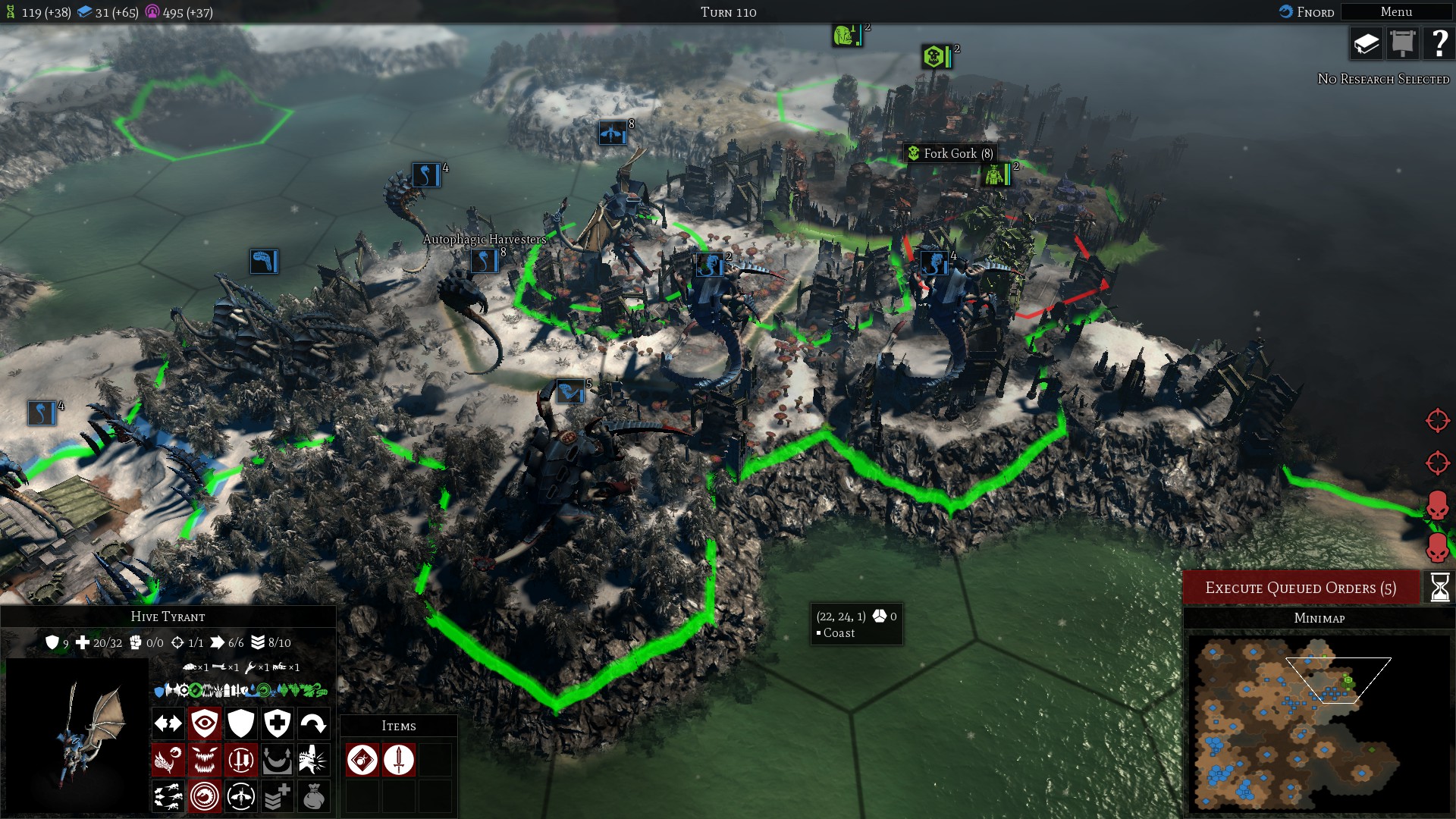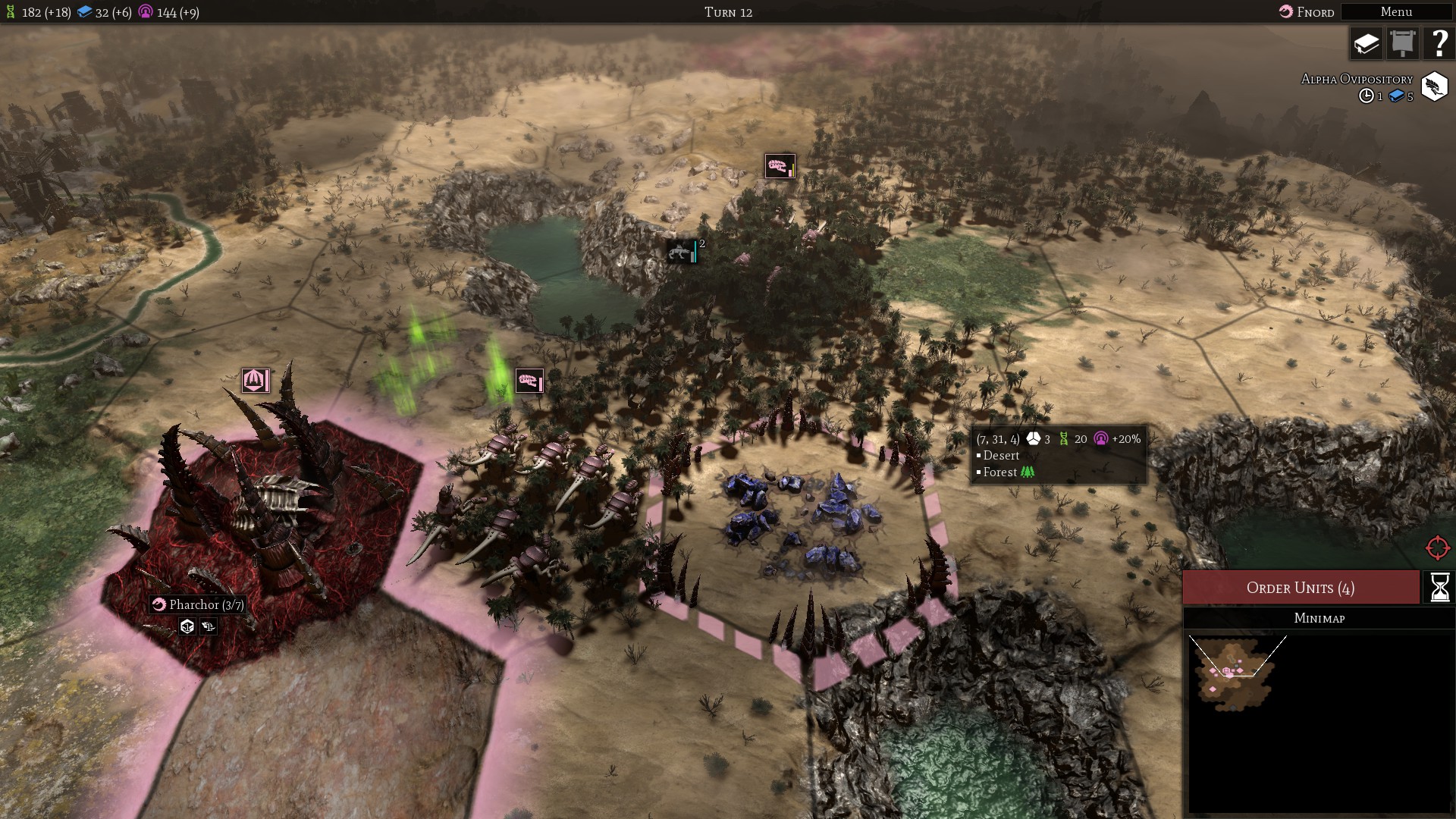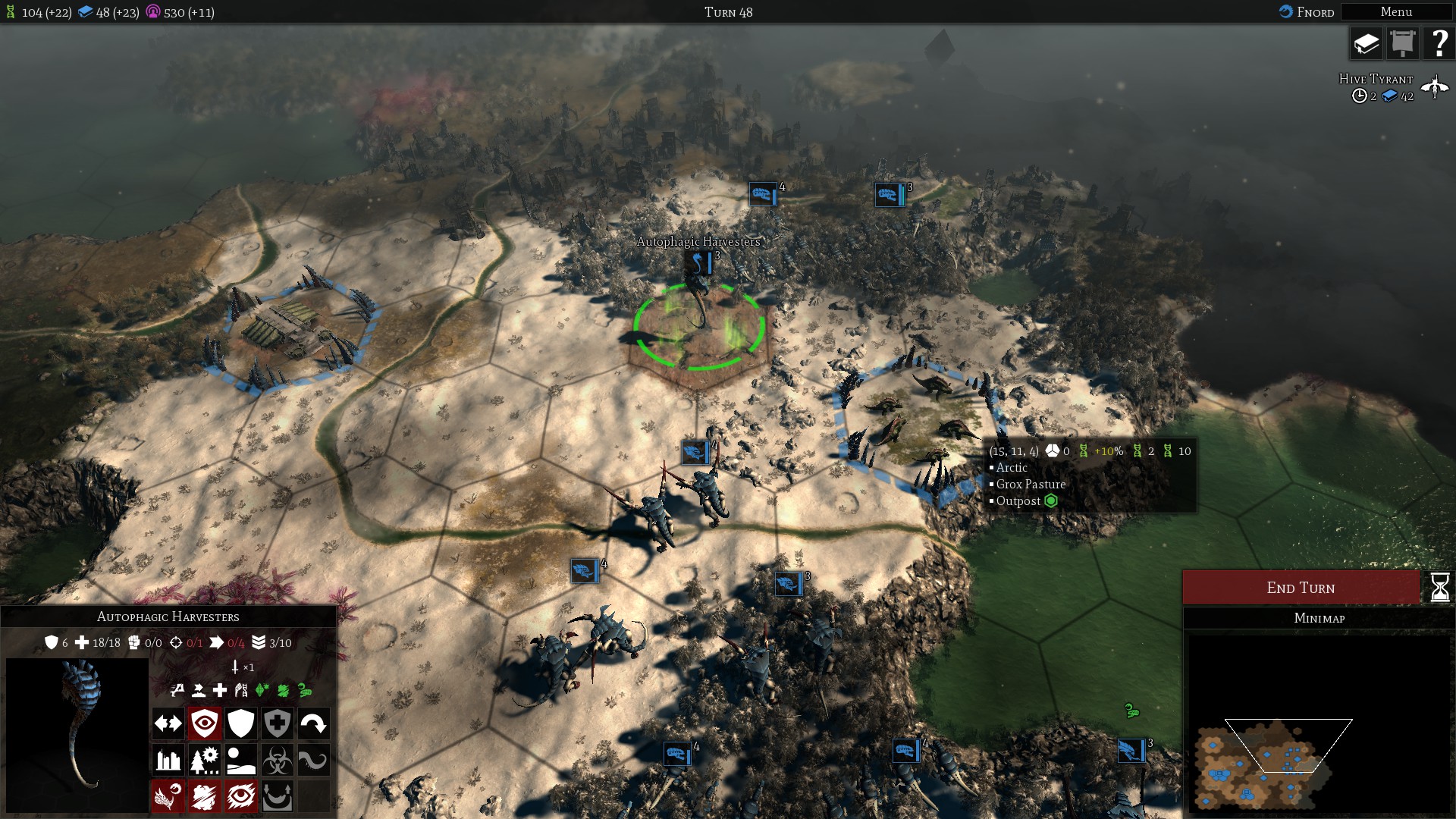The great devourer has come
Type: Single-player, Multi-player
Genre: Strategy
Developer: Proxy Studios
Publisher: Slitherine Ltd.
Release date: 15 Jan, 2019


Or as Games Workshop wrote on the first page of the 5th edition Tyranid codex. “The Great Devourer Is Come”.
Tyranids are the big alien space bugs of the Warhammer 40k universe, who devour everything in their path and leaves nothing but lifeless worlds, stripped of all organic material. And now they’ve been unleashed on Gladius Prime, as the foolish tech priests who were studying a few captured specimens could not contain them.
The Tyranids have been around in Warhammer 40,000 in one form or another since the very start, and is an integral part of the lore, even though they have changed a fair bit over the years (originally Tyranids did not eat everything, and they had slave races who served them, nowadays they’re single-minded eating machines). Unlike the other major races of the 40k universe, Tyranids are not defined by individuals, instead they have one big hive-mind that controls the lesser creatures. Some tyranids, like the awe-inspiring Hive Tyrant is able to act as a conduit for the hive mind, while others are dependent on these conduits to function, and if left they’re cut off from these, they’ll become little more than vicious animals.

The Tyranids in Gladius are quite true to their tabletop roots. You’ve got swarms of lesser creatures, like termagaunts, and hormagaunts, who are individually weak, backed up by creatures that tower over even the tanks of the Imperial Guard, giving Tyranids one of the most varied rosters of any faction. The termagaunts, which are your starting creatures, are even weaker than Imperial Guardsmen, and creatures like the mighty Tyranofex that is so strong that it can turn even the Leman Russ battle tank to scrap metal after a few rounds of shooting.
Playing as Tyranids is an interesting experience. Your starting force is very weak, and worse yet, once you’ve established your first outpost, you’ve got no “synapse” creatures (these are the nodes that control the lesser creatures), so venturing far from your starting base is dangerous, as being away from a synapse creature will apply a rather serious debuff to your creatures. And to the poor termagaunts, even kroot hounds, one of the weakest neutral creatures, pose a serious threat. But once the tyranids gets rolling, they become very dangerous, probably rivaling the Astra Militarum in the late-game. And the tyranids don’t value individuals, so once a unit has served its purpose and you no longer need it, because you’ve got something new and better, you can just recycle your creatures, and get the resources back.

Unlike the Astra Militarum, Tyranids have mechanics that encourage you to play aggressively. With the right creature, namely the Malanthrope nearby, any enemy you kill will turn into research points (to represent the Tyranids assimilating their traits), and with the right tech, the penalty for building more outposts is lowered, encouraging you to aggressively take ground. But at the same time, the need for your creatures to stay in synapse range and the weak early creatures makes it so that you can’t be too aggressive. And none of this is helped by the fact that all the early units are either melee units, or have a range of 1 and next to no armor penetration, meaning that even orks can realistically out-shoot them. This creates a difficult balance in the early game, one that feels like that of no other faction.
Tyranids also have a nasty tendency of trying to consume all the biomass they can find, and this is represented by them stripping any features from tiles they expand their outposts into. They’ve also got creatures (the same that give you research points, the Malanthrope) that can strip tiles bare. This is an interesting mechanic, but it has surprisingly little impact on the game. Stripping a tile bare gives the Tyranids some extra resources to build new units from, but it’s not nearly as useful as a way to disrupt the opponent as it first seems.

Closing Thoughts
One of the biggest gripes people tend to have with Gladius seems to be the lack of content. It lays good foundations, but it really could have used a bit more of everything, particularly as you’ve not got the plethora of different paths to victory that you tend to see in 4X games, so the replay value is inherently a bit lower than something like CIv or Pandora: First Contact. Adding a new faction, particularly one that’s as different as the ones in the base game, really helps give the game some more staying power.
The Tyranids can’t have been an easy faction to make. Some of their defining mechanics, like the need to have synapse creatures nearby to control your lesser creatures, could very easily have become more frustrating and annoying than interesting, but Proxy Studios did manage to find a good balance here, making synapse creatures important but not making it so debilitating to be without one that your army falls apart. They’re also interesting to play against, and you really need to be careful with your units, so that you don’t accidentally give the Tyranids a tech advantage.
Overall, I think the Tyranids are an excellent addition to an already good game. They’re not particularly beginners friendly though and are probably the faction with the steepest learning curve, but for anyone who’s familiar with the base game, they’ll likely provide an interesting new challenge.










